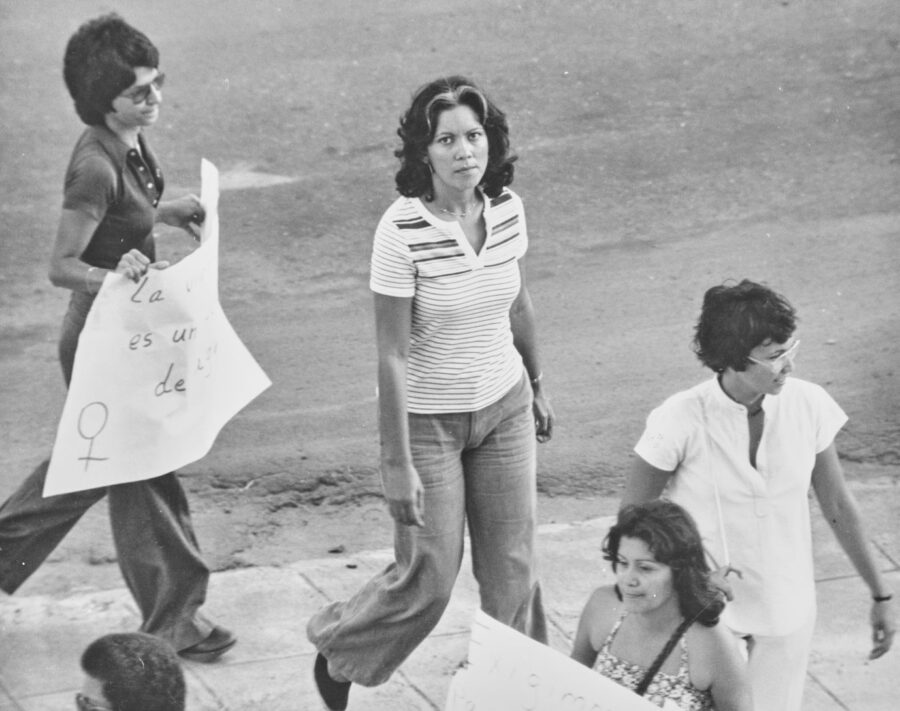Questions around surveillance and control circle around the photography at FORMAT Festival, now on show in Derby


Questions around surveillance and control circle around the photography at FORMAT Festival, now on show in Derby

Fifteen years on from its creation, Thompson is crowdfunding to publish his first-ever body of work, Texas Hill Country

“I’m interested in photographing what the world looks like when we can’t agree on what’s real,” he says

Laub has been photographing her family for the last 20 years. The resulting photobook is by turns lavish, hilarious, and moving

On the day of US President-Elect Joe Biden’s inauguration, the Mexican photographer reflects on her Female in Focus 2020 winning series, conceived last year in a bid to convince American citizens to vote Trump out of office

In Charlie Kwai’s winning Portrait of Humanity image, a young child stands drinking milk from…

Behind a shop vitrine, a human skull, wearing a helmet adorned with a swastika, grins. Next to it, an animal – apparently taxidermic – stands rigid on the floor. The silhouette of a pair of legs belonging to a passer-by on the street reflects in the glass. Above this desultory display, a banner stuck to the top of the window reads, “Mexico… ¡quiero conocerte!”. In this single photograph, taken in 1975 in Chiapas, Graciela Iturbide projects her vision of Mexico: a country of political, religious, social, cultural and economic pluralities and tensions. A place where contrasts present themselves at every turn – sometimes harmonious, sometimes tense.
It is this multilayered image of Mexico that Iturbide has slowly peeled back and revealed through her photography over the last five decades. She has travelled extensively across her own country, between urban and rural landscapes, living with different communities, and moving from the physical to the transcendental, the ancient to the contemporary, witnessing and experiencing the juxtapositions intertwined in Mexican culture.

“What do I know about it? All I know is what’s on the internet.” So said Donald Trump in an interview in March 2016, after he was confronted about the legitimacy of a video he had tweeted, along with the claim that the protester it depicted was a member of ISIS. The video has since been proved as a hoax, neatly demonstrating the difficultly of navigating between truth and fiction in today’s digital landscape. In a world where even a layperson can manipulate images on their phone, and spread them to thousands of fake followers with one click, how can we begin to know what is #real?
It’s the kind of question that All I know is what’s on the Internet will pose, a new exhibition opening at The Photographers’ Gallery, London including work by 11 artists and collectives. It includes “social media machines” made by Australian designers Stephanie Kneissl & Maximilian Lackner, built to maximise activity and likes; and wall-mounted installations by Eva and Franco Mattes that reveal the lesser-known, surprisingly personal, world of online content moderators. Curated to draw attention to the neglected corners of digital image production, the show helps visualise the vast infrastructure of online platforms, and the enormous amount of human labour needed to keep it churning.

A young boy who became a French resistance fighter as just a teenager; a German fighter who lost an arm; a Kazakhstani field nurse; an Indian deployed to fight the Japanese in Burma; a Holocaust survivor who is today a Donald Trump supporter. Sasha Maslov’s photobook Veterans travels the world to meet with some of the last surviving servicemen and women of the Second World War, a conflict whose impact is still being felt some seven decades after the conflict finished.

Growing up surrounded by oppression in a country where violent religious and ethnic clashes were commonplace and close at hand, Suryajaya was constrained by strict traditional and conservative values that condemned homosexuality. He needed to get out. He turned 18, alone, on a flight bound for the United States, leaving behind his family and his old life in Indonesia.